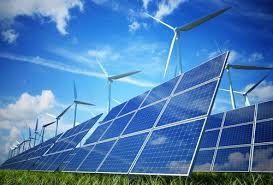 Society
Society

" />The construction of many hydropower dams along the Mekong River to mitigate an ongoing energy shortage threatens the future of the river’s delta in Việt Nam, a workshop heard in HCM City on November 30.
 |
| Wind and solar can comprise large shares of the power by 2030. — Photo kinhtedothi.vn |
HCM CITY — The construction of many hydropower dams along the Mekong River to mitigate an ongoing energy shortage threatens the future of the river’s delta in Việt Nam, a workshop heard in HCM City on November 30.
“The threats to the Mekong Delta will reduce and the delta can be saved if we have smart water and energy planning,” Jake Brunner, head of the International Union for Conservation (IUCN), Indo-Burma region, said.
Dr Eloise Kendy, senior freshwater scientist at Nature Conservancy, provided a definition of hydropower-by-design, which she said can minimise the impacts of dams on the delta.
“Hydropower-by-design is a quantitative, integrated, multi-criteria and multi-project system-scale planning approach to choose the location, design, operation and interaction with other projects in the basin of each hydropower project.”
Hydropower-by-design would improve environmental and social outcomes and the economic value of national infrastructure by being a more strategic investment, and deliver financial value to developers and investors due to improved risk management and system efficiencies, she said.
“Việt Nam’s electricity consumption has grown by 10-12 per cent a year and will triple by 2030,” Brian Eyler, director of the Stimson Centre’s Southeast Asia Programme, said.
“Việt Nam does not have the domestic resources to meet all of this demand and so the country must import electricity from neighbouring nations like Laos and Cambodia.
“But power purchase agreements play a role in deciding which projects move ahead and Việt Nam has leverage to negotiate how its neighbours build their energy sectors.”
He said it could pressure them into focusing on renewable energy.
Nikky Nkiruka Avila, Energy and Resources Group, University of California Berkeley, said: “Large hydropower dams will be too costly … and take too long to build to deliver a positive risk-adjusted return while agile energy alternatives can be built over a shorter time.”
She said in the last five years, the prices of equipment for renewables like wind and solar energy have plunged by 58 per cent and 78 per cent.
“We should build an open-access electricity supply optimisation model for Laos to evaluate alternatives to hydropower development.
“Laos can substitute some of the worst performing planned hydro power projects for a more diverse portfolio of energy options without increasing cost.”
The opportunity cost of developing mainstream hydropower is very high, and the least-cost scenario highlights the feasibility of significant alternatives, she said.
“Wind and solar can comprise large shares of the power mix by 2030, generating similar level of electricity production at a lower cost than building all hydropower projects.”
The delta is now home to 18 million people and produces more than half of Việt Nam’s total rice and 75 per cent of its fruit and aquaculture output, but its productivity depends on the continuous delivery of sediments and nutrients by the Mekong River, which hydropower projects upstream threaten to disrupt. — VNS